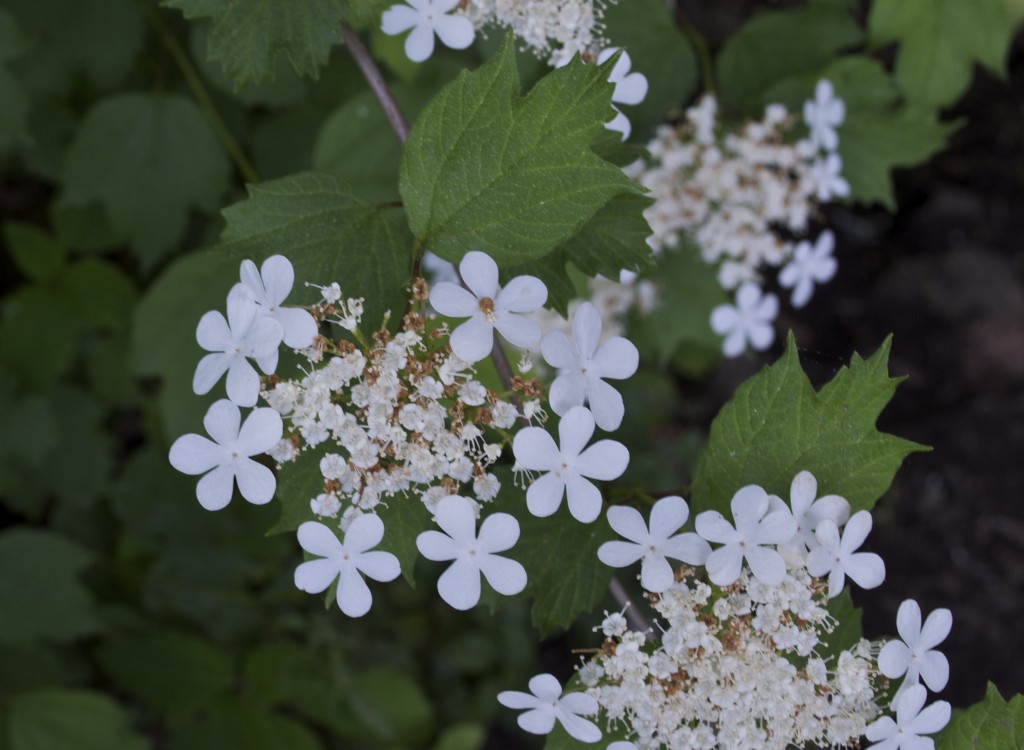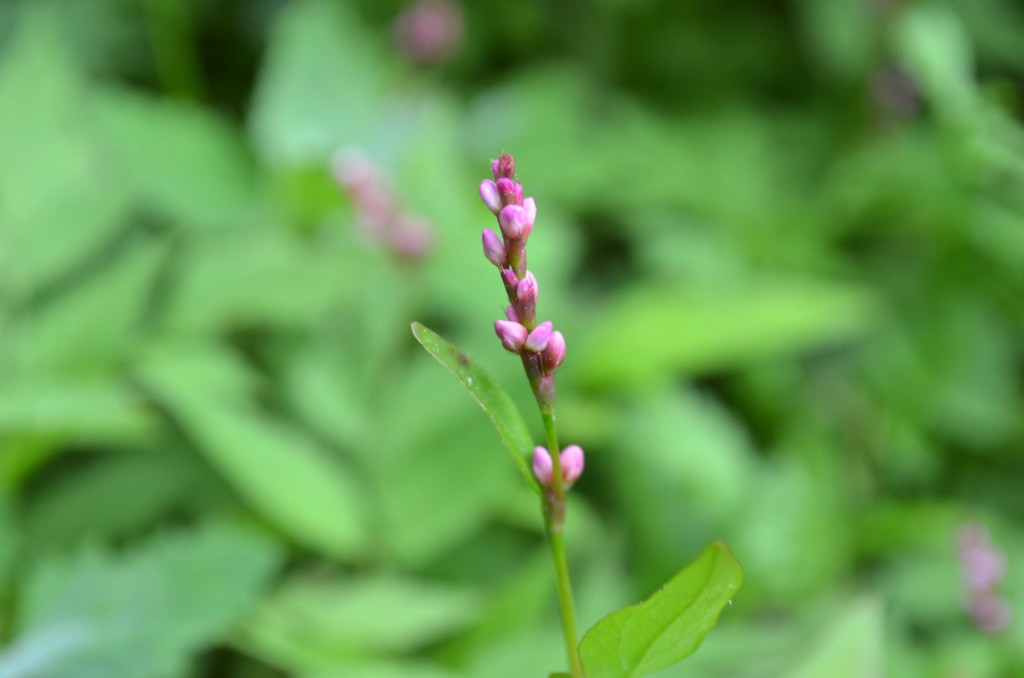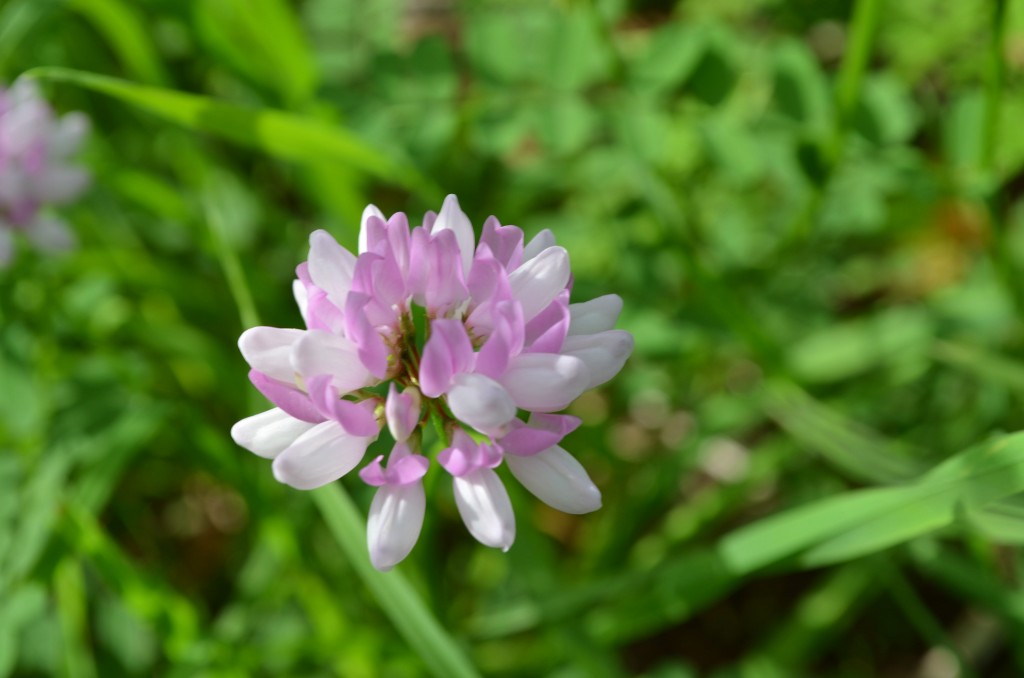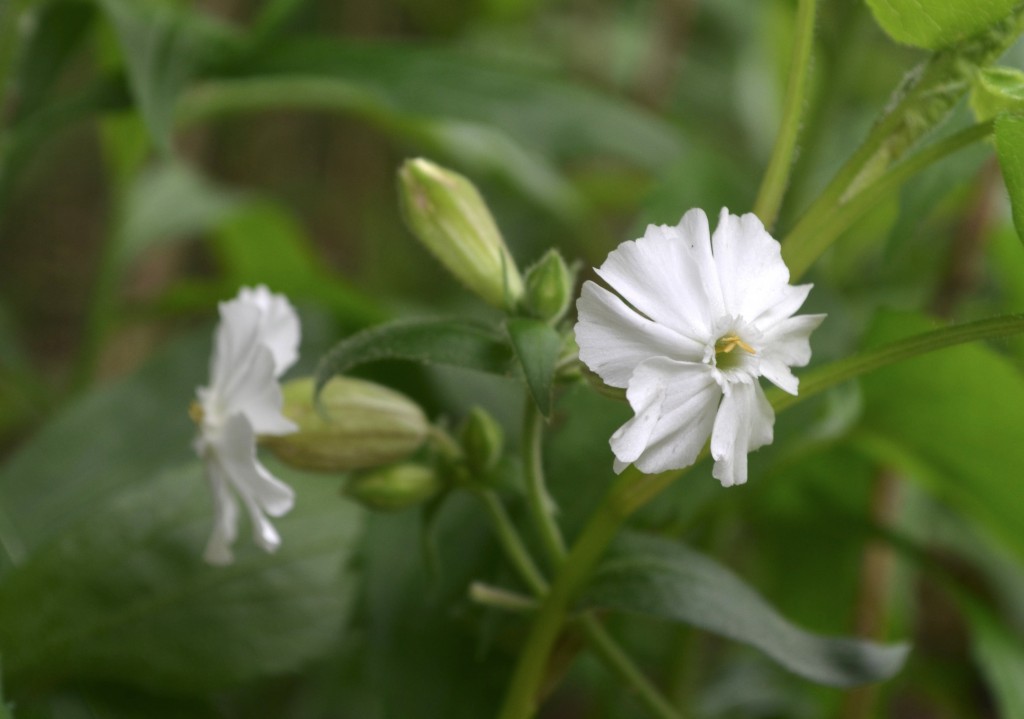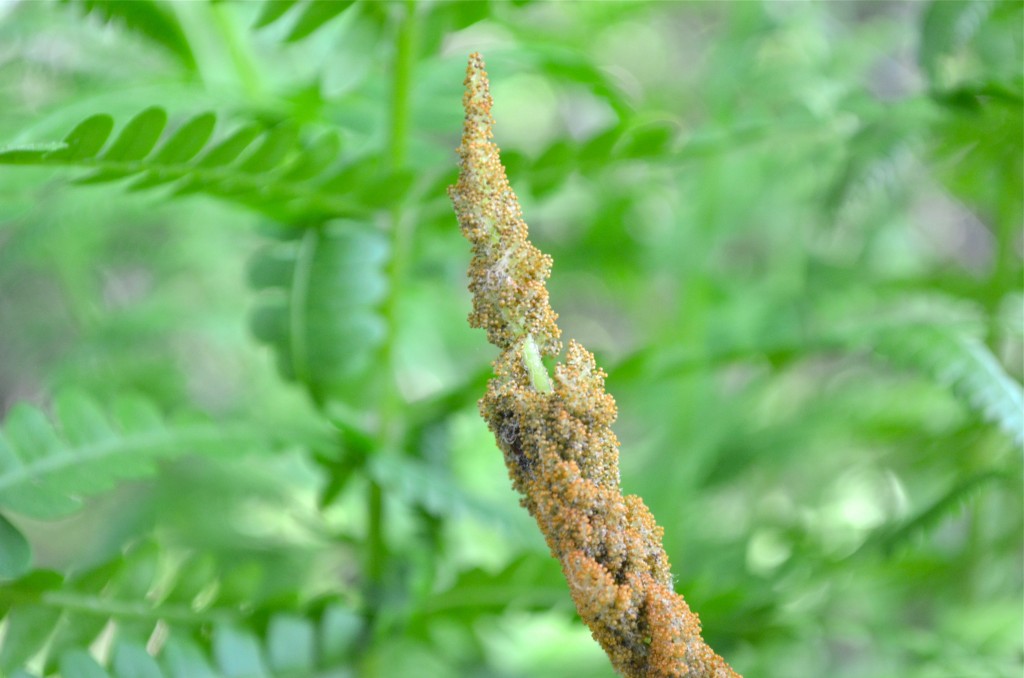 These are very showy right now. Native to the Americas. This part is called a spore-bearing frond. This kind of fern is considered a living fossil because it occurs in the geologic record 75 million years ago.
These are very showy right now. Native to the Americas. This part is called a spore-bearing frond. This kind of fern is considered a living fossil because it occurs in the geologic record 75 million years ago.
Cinnmon Fern (Osmundastrum cinnamomeum)
Bonus picture: Lucy said, she always has to wait for me to take pictures; maybe I could wait a little bit while she checks for critters in this stump…

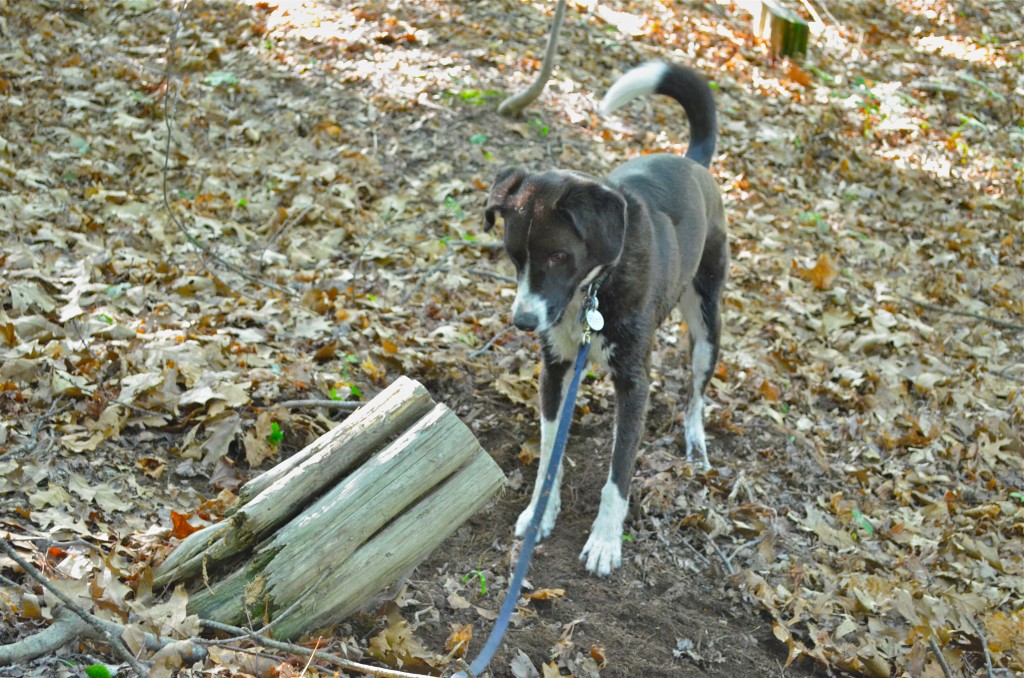
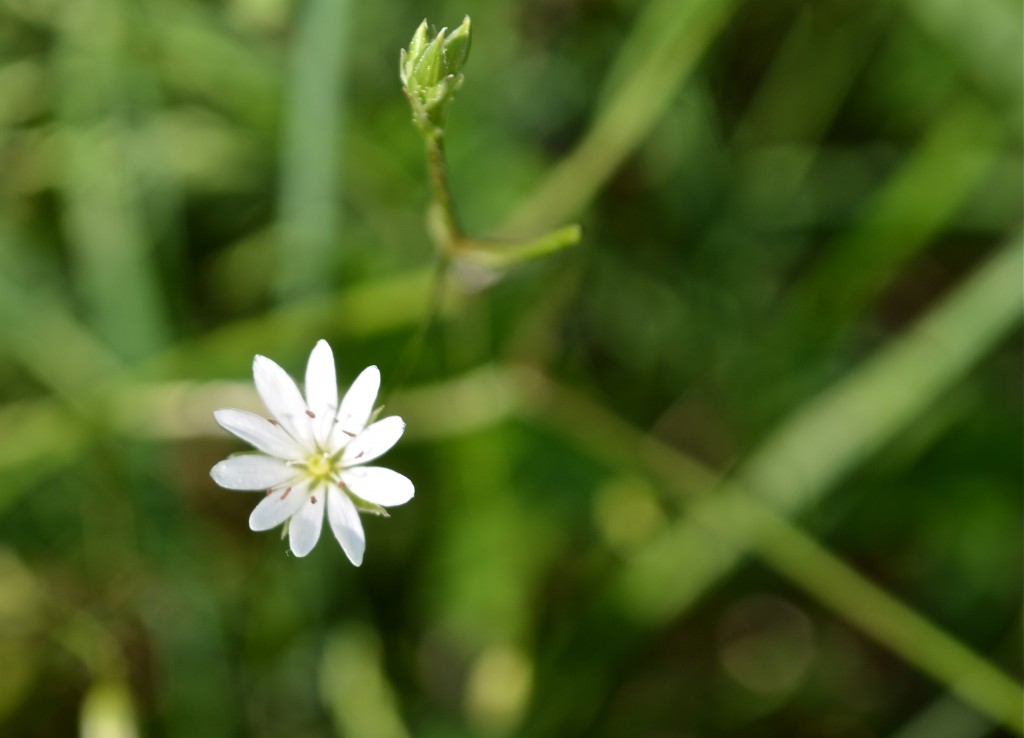
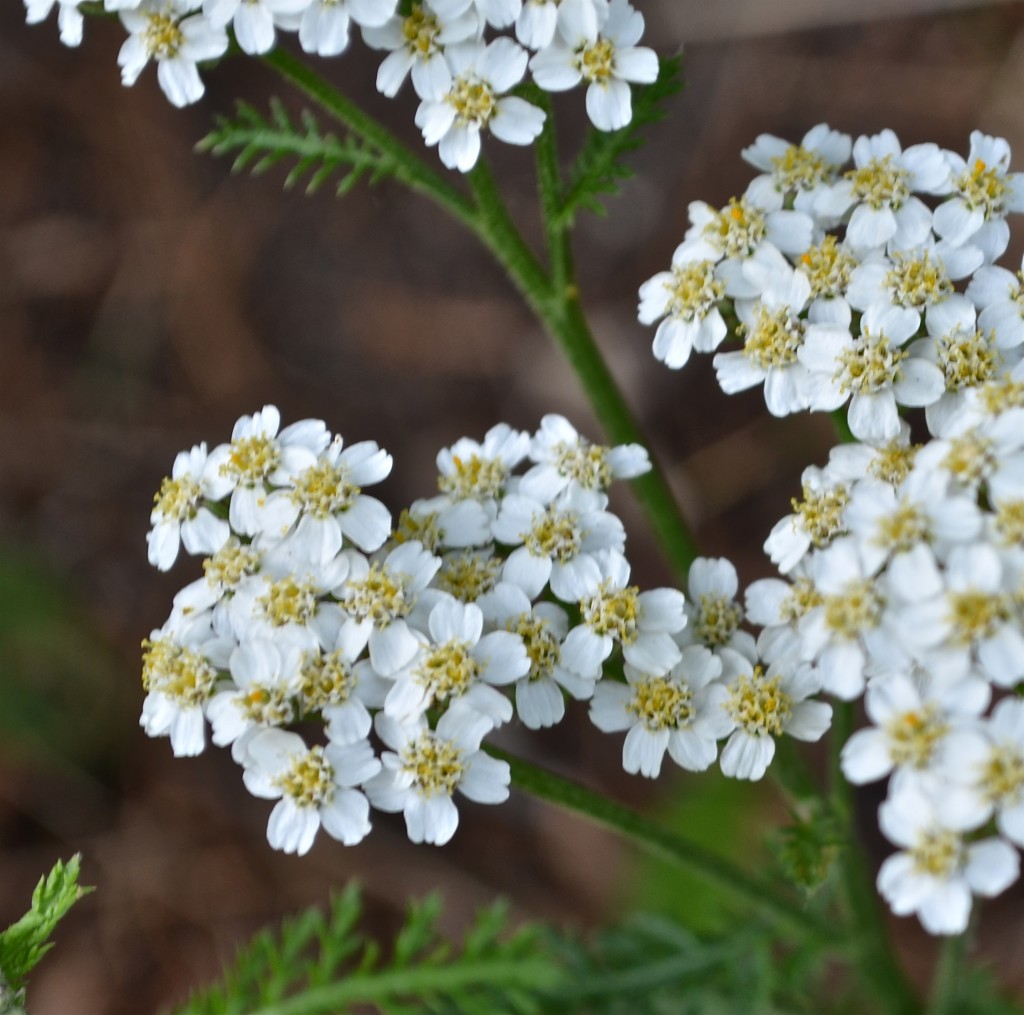
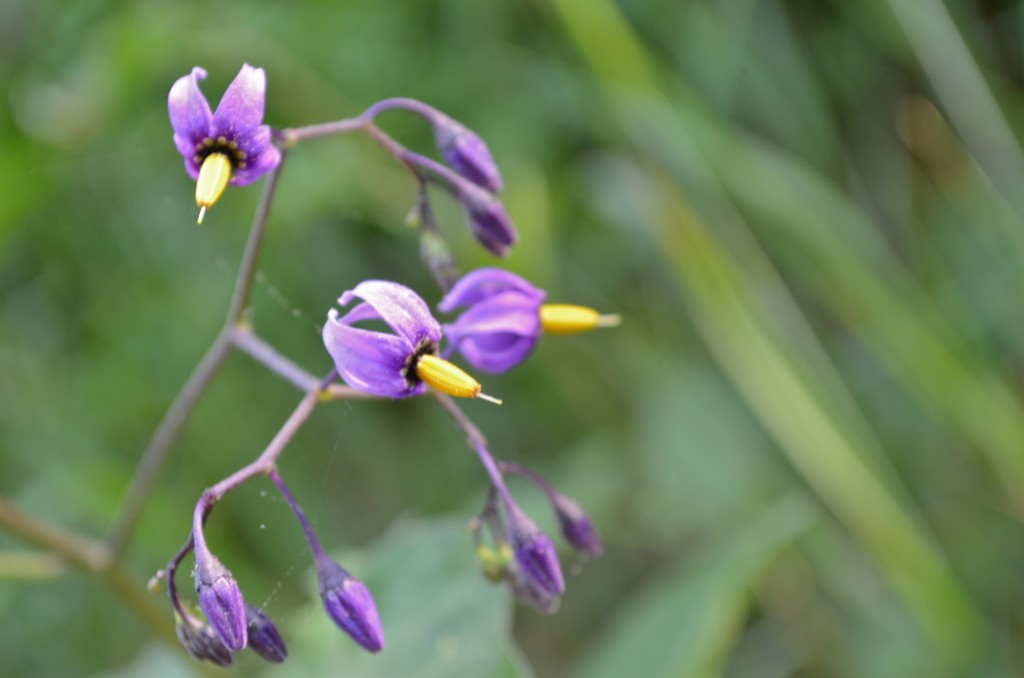
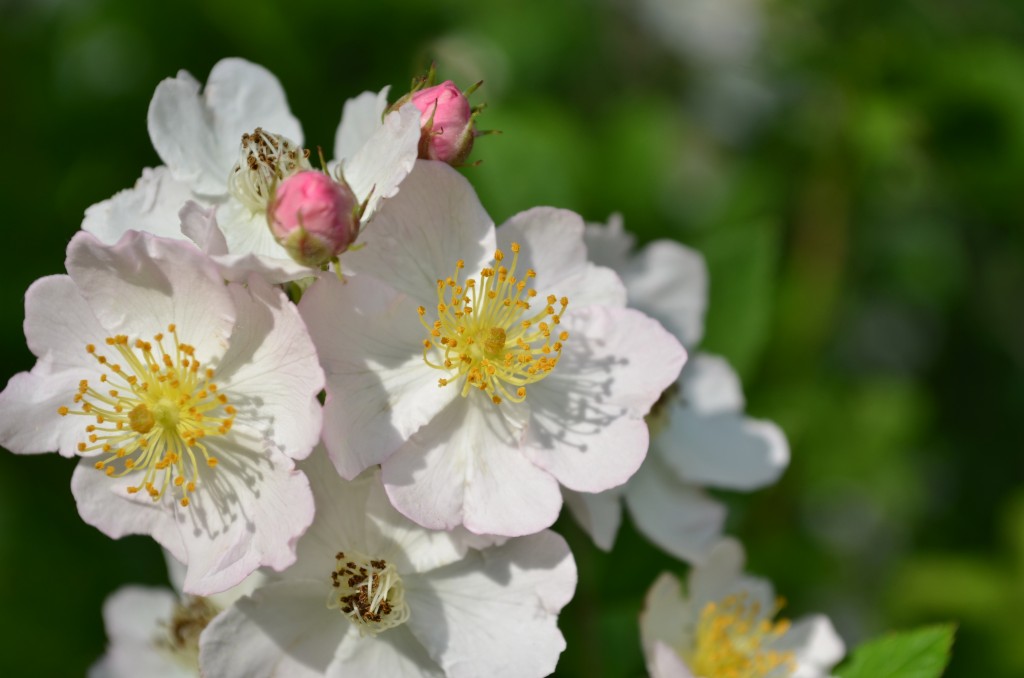
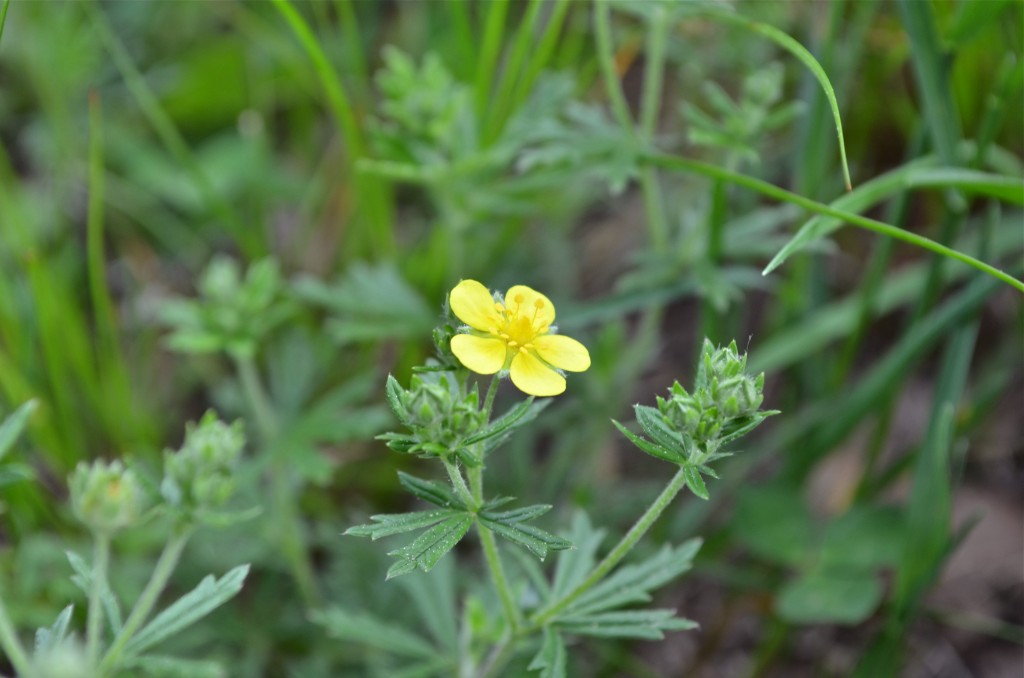 I have already noted Common Cinquefoil growing all over the place— it has leaves similar to wild strawberry. This variety has spiky leaves and is less trailing. The leaves are silvery on the underside. Flowering time June to September, so it’s a little early. Rose family. Origin: Eurasia.
I have already noted Common Cinquefoil growing all over the place— it has leaves similar to wild strawberry. This variety has spiky leaves and is less trailing. The leaves are silvery on the underside. Flowering time June to September, so it’s a little early. Rose family. Origin: Eurasia.